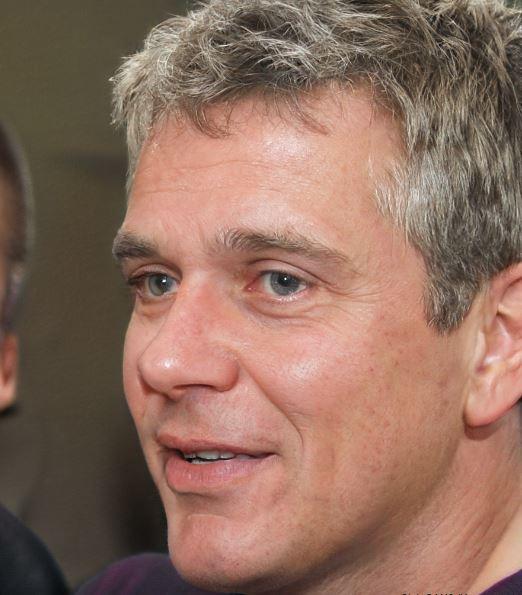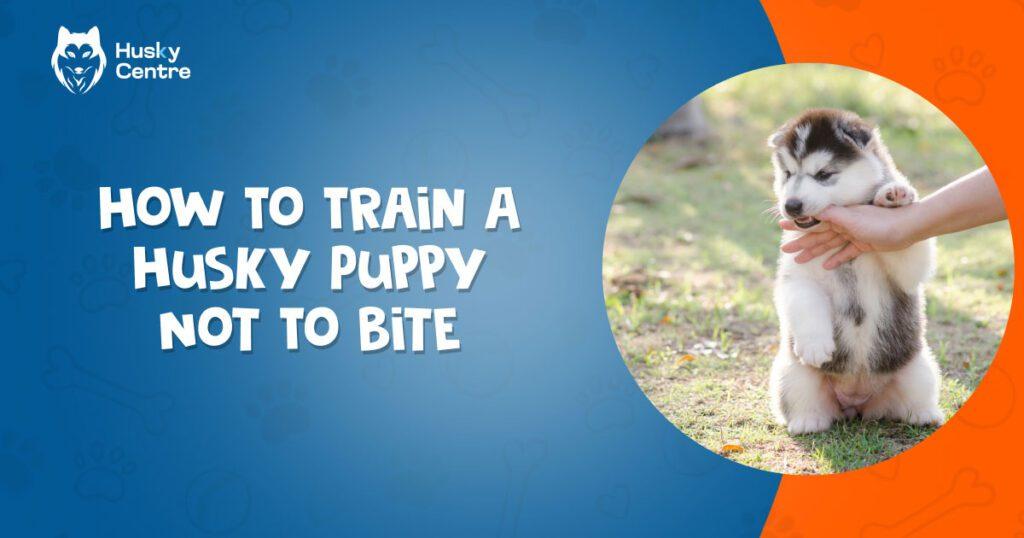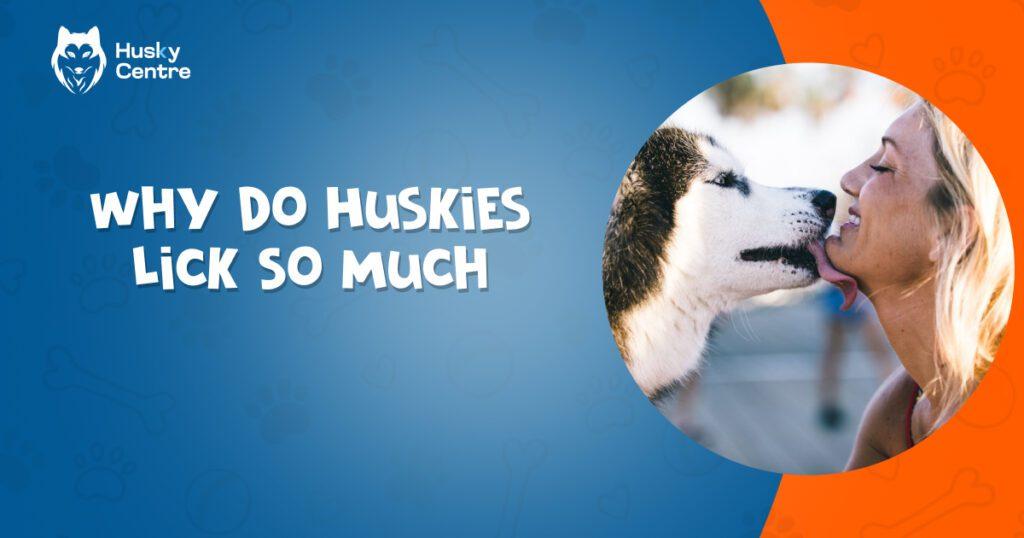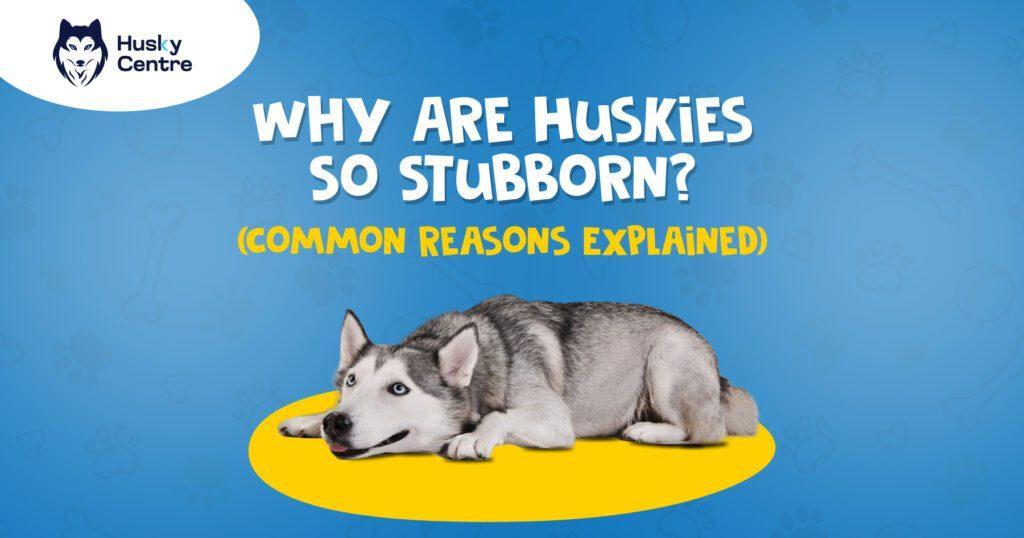To train a Husky puppy not to bite, consistently redirect biting behavior to chew toys and use positive reinforcement. Implement firm, gentle training sessions focused on bite inhibition.
Training a Husky puppy requires patience and consistency, especially when it comes to curbing their natural biting instincts. Huskies are intelligent and playful, often using their mouths to explore their environment and communicate. As a new owner, it’s crucial to establish clear boundaries and use appropriate training techniques to discourage biting from a young age.
By offering suitable chew toys and rewarding non-biting behavior, you can help your Husky learn the right way to interact. Short, focused training sessions that reinforce these lessons will ensure your Husky grows into a well-behaved and sociable adult dog. Remember, the key is to be persistent and positive, creating a trusting bond that will make training more effective.
Why Husky Puppies Bite
Training a Husky puppy not to bite is crucial for a harmonious relationship between pet and owner. Understanding why Husky puppies bite helps in addressing the behavior effectively. Puppies explore the world with their mouths, and Huskies are no exception.
These intelligent dogs often use their mouths to interact with their environment, which includes playful nipping. Knowing the reasons behind biting allows owners to tailor their training methods to curb this natural behavior.
Natural Behavior And Teething
Husky puppies, like all canines, exhibit certain instinctive behaviors from birth. Biting is one of them. It serves various purposes such as exploring their surroundings and learning how to control the strength of their bite. When Husky puppies go through teething, they often bite to relieve discomfort. Here’s what you should know about these natural behaviors:
- Exploration: Puppies discover their world by mouthing objects.
- Bite Inhibition: Through play, puppies learn to control the force of their bites.
- Teething Relief: Chewing soothes sore gums during teething phases.
During the teething phase, provide appropriate chew toys to satisfy their urge to bite. This redirects the behavior away from hands and furniture. By doing so, puppies learn what is acceptable to chew on.
Social And Developmental Factors
A Husky’s social environment plays a significant role in their development. Puppies learn social cues and proper behavior through interaction with their mother, littermates, and humans. Key factors influencing biting behavior include:
- Play: Puppies often bite during play. It’s how they engage with others.
- Attention Seeking: Huskies might nip to get a reaction or attention.
- Overstimulation: Too much play can lead to excited nipping.
To mitigate biting due to social factors, ensure your Husky puppy has regular, positive social interactions. Introduce them to a variety of people and other dogs in controlled settings. This helps them learn proper social behavior and reduces undesirable biting.
Identifying Different Types Of Biting
Recognizing the different types of biting is key to effective training. Husky puppies might bite for various reasons and being able to identify the cause can help you respond correctly. Types of biting include:
| Type of Bite | Description | Training Response |
| Playful Nipping | Gentle and without aggressive intent. | Redirect to a toy or cease play to teach |
Setting The Stage For Training
Training a Husky puppy not to bite is a crucial part of their early development. It’s not just about curbing a bad habit; it’s about ensuring the safety and happiness of both the dog and its human family.
Setting the stage for training is the first step. This means creating the right environment and understanding your Husky’s natural behaviors. A good start leads to better learning and a well-behaved pup.
Creating A Positive Training Environment
A positive training environment is essential for teaching your Husky puppy not to bite. Such an environment helps puppies understand what behaviors are desirable. Here are key elements to consider:
- Consistency: Keep rules and routines the same every day.
- Praise: Offer treats or kind words when your puppy does well.
- Patience: Understand that learning takes time.
- Distractions: Reduce noise and movement that can upset training.
Use these steps to ensure a supportive setting:
- Choose a quiet room with few distractions.
- Have treats ready to reward good behavior.
- Ensure everyone in the household knows the training rules.
Remember to keep training sessions short. Puppies have short attention spans. Sessions of 5 to 10 minutes work best. Always end on a positive note to keep your Husky eager for the next lesson.
Understanding Huskies Temperament
Huskies are known for their unique temperament. Recognizing these traits can make training more effective. Here’s what you need to know:
| Trait | Description | Impact on Training |
| Intelligent | Huskies are smart and learn quickly. | Use varied exercises to keep them engaged. |
| Stubborn | They have a strong will and make their own choices. | Be patient and consistent with commands. |
| Social | They love people and other dogs. | Teach bite inhibition during playtime. |
Socialize them early with other cats, dogs and people to refine their behavior. Your Husky’s temperament is a gift; with the right approach, it can shape a friendly and gentle companion.
Basic Training Techniques
Training a Husky puppy not to bite is crucial for a happy coexistence. It’s important to start early with basic training techniques to ensure your Husky grows into a well-behaved companion.
These techniques focus on teaching control, encouraging good behavior, and redirecting unwanted biting into acceptable activities. By using these methods, you can help your Husky understand the rules of their new home.
Teaching Bite Inhibition
Bite inhibition is teaching your Husky to control the force of their bites. Puppies naturally bite and nip during play, but it’s essential they learn the difference between playtime and inappropriate biting. Start by playing with your Husky using soft toys.
If they bite too hard, respond with a clear and firm “ouch” and stop the play immediately. This will help them associate gentle play with continued fun. Here are key steps in teaching bite inhibition:
- React Consistently: Always respond the same way to hard bites to avoid confusion.
- Resume Play: After a short pause, resume play if your Husky is calmer.
- Repeat: Continue this process until your puppy learns to be gentle.
Below is a simple table to track progress over a week:
Additional rows as needed
| Day | Number of Hard Bites | Notes |
| Monday | 5 | Responded to “ouch” quickly. |
| Tuesday | 3 | Needed two breaks during play. |
Positive Reinforcement
Positive reinforcement rewards your Husky for good behavior. It’s a powerful tool that encourages them to repeat actions that earn praise, treats, or playtime. Start by deciding on a reward your Husky loves, such as a favorite treat or a belly rub.
When your puppy plays without biting, immediately give them the reward. This will create a strong association between gentle play and positive outcomes. Key points include:
- Timing: Deliver rewards right after the good behavior.
- Consistency: Reward every time to reinforce the habit.
- Variety: Use different rewards to keep your Husky interested.
Remember, patience is key. Keep training sessions short and fun to maintain your Husky’s attention.
Redirection Techniques
Redirection helps manage biting by offering an alternative. When your Husky starts to bite, redirect their attention to a toy or chew bone. This teaches them what is appropriate to bite. Keep a variety of toys handy to make this easier. Here are steps to redirect biting effectively:
- Identify: Notice the signs that your Husky is about to bite.
- Interrupt: Gently say “no” and offer a toy instead.
- Engage: Play with the toy together to show it’s a good alternative.
Consistent redirection not only prevents biting but also enriches your Husky’s environment with stimulating activities.
Advanced Training Strategies
Training a husky puppy not to bite is crucial for a happy, safe home. Advanced training strategies are key. They build on basic commands. They also help your husky become well-behaved. Let’s dive into these techniques to stop biting behaviors.
Consistent Commands And Cues
Teaching your husky to understand and follow commands is vital. Use clear, simple words. Repeat them in different situations. This helps your husky learn. Here’s how to make commands work for you:
- Pick short, distinct words for commands like “No bite” or “Gentle”.
- Use the same commands every time. This avoids confusing your puppy.
- Reward good behavior with treats, praise, or playtime.
- Avoid yelling. It can scare your husky and make biting worse.
Keep practice sessions short but frequent. Puppies have short attention spans. Consistency is key. Stick with your training plan every day.
Socialization And Exposure
Socialization teaches your husky to be calm around others. It reduces fear and aggression. This helps prevent biting. Start socialization early. Introduce your husky to different people, pets, and places. Here’s a plan:
- Invite friends over. Let them interact with your puppy.
- Visit dog parks. Watch how your husky plays with other dogs.
- Expose your puppy to new sounds, smells, and sights.
- Keep your husky on a leash in public. This keeps everyone safe.
Always watch your husky’s reactions. Stay calm and positive to show that there’s nothing to fear.
Managing Energy Levels
Huskies are full of energy. They need to run, play, and explore. Managing their energy helps prevent biting. It’s their way of releasing pent-up energy. Create a routine that includes:
- Daily walks or runs. These tire your husky out and reduce their need to bite.
- Playtime with toys. This keeps your husky busy and focused.
- Training sessions. These challenge your husky’s mind.
- Quiet time. Puppies also need to rest.
Keep your husky active, but don’t forget downtime. Balance is important. Too much energy can lead to biting. Too little can cause boredom and chewing.
Addressing Persistent Biting
Training a Husky puppy requires understanding their unique traits. Huskies are intelligent, energetic, and have strong jaws. These traits can lead to persistent biting if not managed correctly.
Addressing persistent biting is crucial for a harmonious relationship with your furry friend. It’s about finding the right balance between discipline, understanding, and consistent training. Let’s uncover the steps to ensure your Husky grows into a gentle companion.
Identifying Triggers
Understanding why your Husky puppy bites is the first step in addressing the behavior. Puppies explore the world with their mouths, but consistent biting can be a sign of underlying issues.
Observe your puppy’s behavior to pinpoint what sparks this habit. Triggers can vary from teething discomfort to a response to their environment. Here are common triggers:
- Teething: Puppies chew to relieve teething pain.
- Playfulness: Biting can be a part of normal play.
- Fear or defensive behavior: If they feel threatened.
- Overexcitement: High energy levels can lead to nipping.
Once triggers are identified, you can take steps to remove or reduce them. For example, offer chew toys for teething, and manage playtime to prevent overexcitement. A structured routine can also reduce anxiety and improve behavior.
Professional Help
If biting persists despite your best efforts, seeking professional help is advisable. A certified dog trainer or a behaviorist can provide tailored strategies for your Husky. These professionals understand canine behavior deeply and can offer insights that may not be apparent to puppy owners. They can assist with:
| Professional Service | Benefits |
| Dog Training Classes | Socialization and obedience skills |
| Private Consultations | Personalized training plans |
| Behavior Modification Programs | Specific strategies for biting issues |
Patience And Persistence
Training a Husky puppy not to bite requires time and consistent reinforcement. Patience is key. Puppies learn through repetition, so practicing bite inhibition daily is essential. Positive reinforcement makes learning enjoyable for your Husky. Praise and reward them when they show the desired behavior.
Use clear and consistent commands to help them understand what is expected. Persistence in training will yield results, shaping your Husky into a well-behaved adult dog. Remember, short and frequent training sessions work best to keep their attention focused.
- Practice bite inhibition regularly.
- Reward good behavior immediately.
- Stay consistent with commands and rules.
With patience and persistence, your efforts will create a strong bond and a safe environment for both your Husky and your family.
Common Mistakes To Avoid
Training a Husky puppy not to bite is a vital part of their development. It’s crucial to avoid common errors that can hinder progress. Let’s explore these mistakes and learn to correct them. By doing so, your furry friend will grow into a gentle and well-mannered companion.
Inconsistent Responses
Consistency is key when training any puppy, especially a Husky. Puppies learn through repetition. If reactions to biting vary, confusion sets in. Here’s what to watch out for:
- Not everyone agrees: Ensure all family members react the same way to biting.
- Changing rules: Don’t allow biting sometimes and forbid it at others.
- Delayed reactions: Address biting immediately so your pup makes the connection.
Consider this table to guide consistent responses:
| Behavior | Do This | Not That |
| Gentle Play | Praise and Treat | Ignore |
| Biting | Redirect to Toy | Scold |
Negative Reinforcement
Training should be a positive experience. Negative reinforcement can lead to fear and aggression. Avoid these missteps:
- Don’t shout: It scares your pup and damages trust.
- Physical punishment is a no: It can lead to biting out of fear or defense.
- Avoid frustration: Stay calm, or your Husky will get anxious.
Instead, use positive reinforcement. Reward good behavior with treats, praise, or playtime. This approach builds a bond of trust and teaches your Husky to associate good behavior with rewards.
Ignoring The Root Cause
Biting isn’t random. Puppies bite for reasons like teething or seeking attention. Ignoring these causes won’t solve the problem. Here’s what to do:
- Provide chew toys: They help with teething discomfort.
- Ensure enough exercise: Huskies are energetic and need to burn off steam.
- Teach bite inhibition: Let your pup learn the force of their bite by yelping when it’s too hard.
Address the underlying issue, and you’ll see a reduction in biting. Your Husky will be happier, too.
Is It Normal For Husky Puppies To Bite?
Training a Husky puppy not to bite is an important part of their upbringing. Many new owners wonder, “Is it normal for husky puppies to bite?” Yes, it is. Puppies, including Huskies, explore the world with their mouths. Biting is a natural behavior during play and teething. Understanding this can help you train them effectively.
Why Do Husky Puppies Bite?
Biting is a normal part of puppy behavior, especially in Huskies. They use their mouths to explore their environment and to play. Here are some reasons why your Husky puppy might be biting:
- Teething: Like human babies, puppies go through teething. This can make their gums sore and biting helps relieve this discomfort.
- Play: Puppies learn how to interact with the world around them through play. Biting is a common way for them to engage and learn boundaries.
- Attention: Sometimes, a puppy might bite to get your attention. It’s their way of saying they want to interact or need something.
How To Train Your Husky Puppy Not To Bite
Training your Husky puppy not to bite involves patience, consistency, and understanding. Here are some effective steps:
- Use toys: Redirect your puppy’s biting to toys. It teaches them what is acceptable to bite.
- Yelp and pause: When they bite, let out a yelp and stop playing. This mimics how puppies learn from their siblings that biting hurts.
- Positive reinforcement: Reward your puppy with treats or praise when they play without biting.
- Time-outs: If biting continues, give your puppy a short time-out. This helps them learn that biting leads to less playtime.
- Consistency is key: Everyone in the household should follow these steps to avoid confusing your puppy.
Tips To Prevent Biting In Husky Puppies
Preventing biting behavior starts early. Here are some tips:
- Start early: Begin training as soon as you bring your Husky puppy home.
- Be patient: Remember, training takes time. Stay calm and consistent.
- Provide plenty of chew toys: These are great for teething puppies and can keep them from biting you.
- Socialize your puppy: Let them meet other dogs and people. It helps them learn good manners and reduces aggression.
Remember, biting is a normal part of a Husky puppy’s development. With the right approach, you can teach them not to bite and ensure a well-behaved adult dog.
At What Age Do Huskies Stop Biting?
Training a Husky puppy not to bite is an essential part of their upbringing. Young Huskies explore the world with their mouths, much like human infants. This behavior often leads to a phase of nipping and biting.
Owners frequently ask, at what age do Huskies stop biting? Typically, Huskies reduce biting behavior as they mature, around four to six months old, when they lose their puppy teeth. Proper training can help expedite this process.
At What Age Do Huskies Stop Biting?
Training plays a crucial role in managing a Husky’s biting. It’s important to start early, as Huskies are quick learners. Their biting phase largely diminishes once they outgrow the teething period.
Consistent training and positive reinforcement encourage good behavior and help establish a non-biting habit. By six months, most Huskies have learned bite inhibition with proper guidance.
Training Techniques To Discourage Biting
- Redirect the biting: Offer chew toys instead of hands or feet.
- Use clear commands: Teach words like ‘No’ or ‘Stop’ to signal undesired behavior.
- Positive reinforcement: Reward your Husky when they obey and don’t bite.
Understanding Your Husky’s Behavior
Recognizing why your Husky bites is key to training. Puppies bite out of curiosity, playfulness, or teething discomfort. Identify the cause to address the behavior effectively. Remember, patience and consistency are vital.
When To Seek Professional Help
If your Husky continues to bite past six months, professional help may be needed. A certified dog trainer can offer personalized strategies to manage and correct biting habits.
What Commands Stop Puppies From Biting?
Training a Husky puppy not to bite is crucial for a peaceful home. What commands stop puppies from biting? This guide will show you effective commands to use. By teaching these commands, you can prevent unwanted biting and ensure a well-behaved furry friend.
Use The No Command
“No” is a simple yet powerful command. It tells your puppy that biting is unacceptable. When your Husky bites, say “No” firmly. Avoid shouting, as it might scare them. Consistency is key. Repeat this command whenever they bite, and they will soon understand that biting leads to negative consequences.
Teach Leave It
The “Leave It” command is useful. It teaches your Husky to stop and move away from whatever they are biting. Start by holding a treat in your closed hand. When they try to bite, say “Leave It”. Once they stop, give them the treat. This command helps control biting behavior effectively.
Introduce Sit
Training your Husky to “Sit” can also reduce biting. When they bite, command them to “Sit”. Give a treat when they comply. This distracts them from biting and reinforces good behavior. Over time, they’ll learn that sitting nicely is more rewarding than biting.
Apply Off
The “Off” command works well for training. If your Husky bites, gently say “Off” and move them away from you. Reward them with treats and praise when they obey. This command teaches them that biting leads to less attention and fun.
Frequently Asked Questions
Why Do Husky Puppies Bite?
Husky puppies bite primarily as a way to explore their environment. It’s a natural behavior for them, especially when they’re teething. Puppies also bite during play or when they’re seeking attention. Understanding this can help owners respond appropriately to reduce biting behaviors.
How Can You Stop A Husky Puppy From Biting?
To stop a Husky puppy from biting, use positive reinforcement techniques. Offer them chew toys instead of your hands or clothes. Use commands like “no” firmly but gently. Praise and reward them when they obey to reinforce good behavior. Consistency and patience are key in teaching them.
At What Age Do Husky Puppies Stop Biting?
Husky puppies typically begin to decrease their biting behavior as they grow older, usually around 6 to 8 months of age. This is when they lose their baby teeth and the discomfort associated with teething diminishes. Proper training during their early months can help expedite this process.
Is Biting Normal For Husky Puppies?
Yes, biting is a normal part of Husky puppies’ development. It’s how they explore their world, play, and express themselves. However, it’s important for owners to guide their puppies on appropriate biting behaviors to ensure they grow into well-behaved adult dogs.
Conclusion
Training your Husky puppy not to bite is crucial for a harmonious home. Start early, stay consistent, and use positive reinforcement techniques. Remember, patience and understanding go a long way. By following these steps, you’ll nurture a well-behaved companion who’s both respectful and loving.
Your efforts today pave the way for a lifetime of joy together.


Meet Jarred, the heart and soul behind HukyCentre. With a deep affection for furry friends, he pours his passion into every word he writes. His genuine love for dogs shines through in his engaging and informative content. As a dedicated dog enthusiast, Jarred’s goal is to share valuable insights and tips that resonate with fellow dog lovers. Join Jarred on the journey as he celebrates the joy and companionship that dogs bring into our lives.



